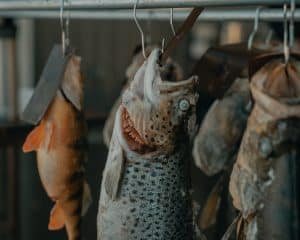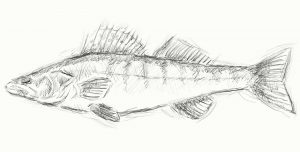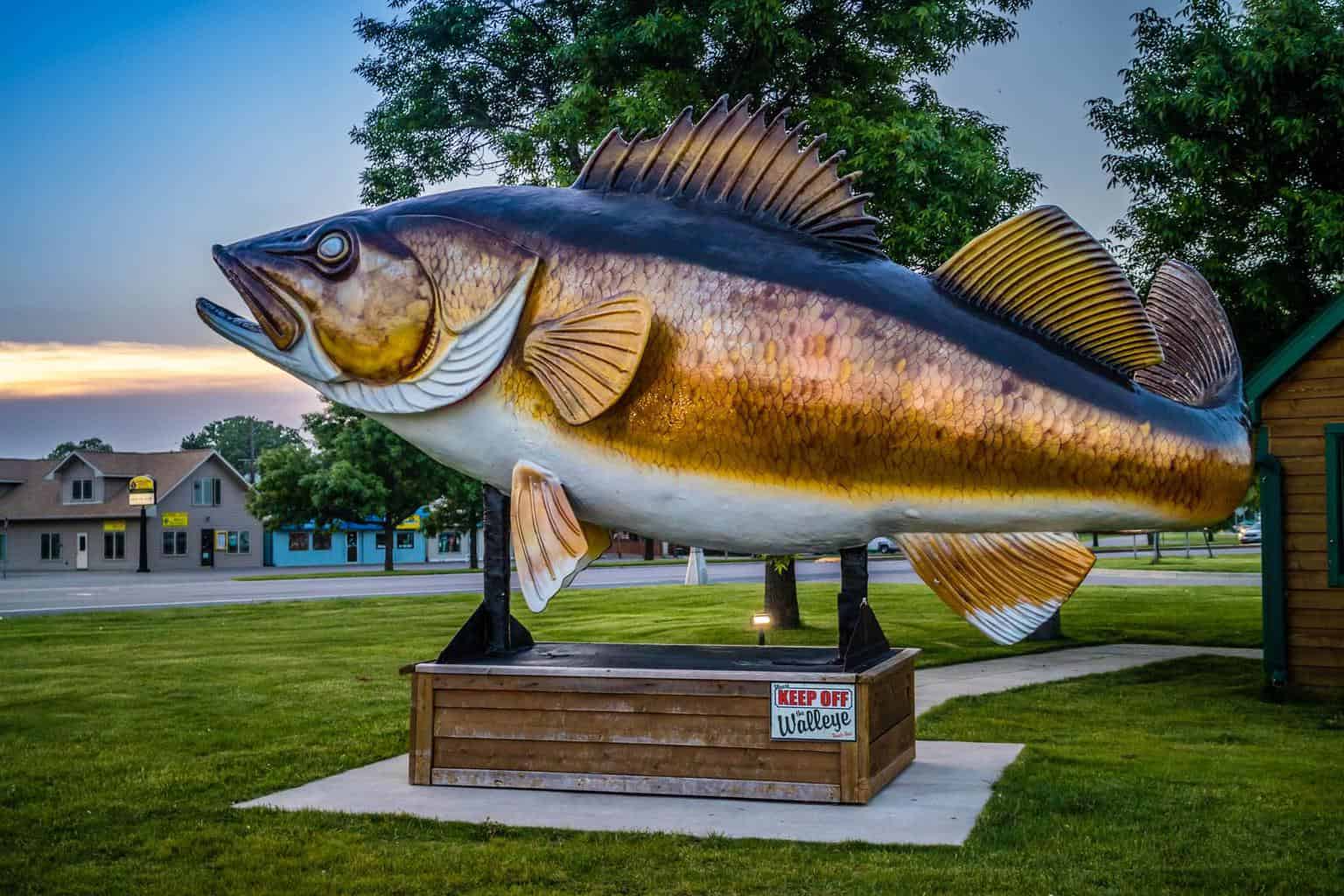Walleye are one of the most sought-after game fish in North America. They’re so popular that they are often moved to new lakes to promote their population growth.
Walleye are an excellent choice of prey for many anglers due to their availability, aggressive feeding habits, and large size. They can be found across the world, but are most prevalent in Canada and the Great Lakes region.
Now you may be wondering when is the best time to catch walleye? Learn about the seasons, how walleye behave during this time of year, and some tips on catching them more often!
The Seasons
Walleye are considered a warm-water fish and they can be found across the world. They like to swim in water that’s between 55 and 75 degrees Fahrenheit (12 to 23 degrees Celsius), though spawning may already start from 42 degrees Fahrenheit (5 degrees Celsius).
Although you can find walleye throughout the year, the best time for fishing them is during the early summer months. These fish tend to feed more aggressively during this season due to their need for energy. Plus, walleye like warmer waters and it’s easier to catch them when they’re near shallow waters where there is more sunlight.
If you’re looking for a way to improve your walleye fishing experience, try using live bait such as worms or nightcrawlers. Walleye are bottom feeders and therefore prefer baits that can be found on the ground of the waterbed as opposed to those that float on top of it.
Walleye will also bite on artificial bait such as plastic lures, stick baits, and spinners so don’t be afraid to experiment!
Springtime Walleye Fishing
Walleye fishing can be best in the springtime, when they are actively feeding to bulk up for the summer months. Walleye are usually most active at night, so anglers should use this time to their advantage.
Walleye will typically feed on baitfish and other small fish during this time of year. It’s important for anglers to take note that walleye may not eat large lures or live bait due to their size. Anglers should focus on smaller baits instead, like minnows or shiners.
The best way to catch walleye is by using a slow presentation. The goal is to entice the fish into striking your line but not pulling away too quickly. Hitting too hard will often scare them off before they have a chance to bite!
A slow presentation is key because it gives you more time to determine if the fish has bitten your hook. This also prevents hooks from getting caught in weeds or snags along the bottom of the lake, which can result in lost tackle and an angry walleye!

Summertime Walleye Fishing
In the summertime, walleye are typically found in shallower waters. They spend their days here, because the water is warmer and there is more food. In the evening, they will migrate to deeper waters to feed on plankton.
Walleye fishing in the summertime can be challenging because of the water depth and the fact that they are going to deeper depths to feed during this time. However, there a few things you can do to increase your chances of catching a large walleye.
First, use a spoon or crankbait while fishing in shallow waters. The bait should be thrown into sandbars or gravel banks where walleye like to stay during this time of year. Second, try fishing with live bait such as minnows, shiners, or suckers at night when walleye move towards deep waters to feed. Third, fish with heavy tackle and utilize deep diving lures so you can reach depths where walleye may be feeding during the day.
Fall and Wintertime Walleye Fishing
Walleye can be caught all year long, but they’re more prevalent in the colder months. This is because walleye spend a lot of time on or near the bottom of a lake during this time of year.
In the wintertime, walleye feed on small fish and crustaceans that have been pushed to the bottom during spawning season. Walleye will also eat gizzard shad, which are abundant in wintertime.
The Great Lakes region has a tradition of ice fishing for walleye—particularly in Michigan. In fact, about half of the world’s fishery-harvested wild walleye comes from this area!
If you want to catch more walleye during these months, try fishing on or around a breakline. These are areas where currents break along a shoreline and create eddies and points where fish can gather to feed or spawn. You can also use deep-diving crankbaits to reach these fish at their feeding level.
How to Catch Walleye More Often
There are several factors that can affect when you should go fishing for walleye. Walleye spawn during the summer months, so it’s best to fish in late spring and early summer.
Walleye will tend to school together in deep water during the late summer and winter months. Fishing near underwater structures, such as weed beds or sunken boats, can increase your catch rate.
Walleye also move to shallow waters in the spring and fall because they need a warmer water temperature to survive. Fishing in shallower waters is a good idea during these seasons.
The best time to find walleye is at night because they’re more active then. If you’re going out on a deep-water fishing trip, consider using lights or glow sticks to attract them from the depths!
Get the right bait
When you’re catching walleye, one of the most important things to consider is bait. The right bait will help you land the fish.
Different baits will work better in different locations and at different times of year. For example, if you’re fishing for walleye during the spring and summer, you will want to use a smaller bait that doesn’t sink as quickly as other larger baits.
However, if you’re fishing for walleye in the winter or fall, a large bait that sinks quickly will be more effective because walleye typically feed near the bottom of the lake during these seasons.
In order to find out what kind of bait is best suited for your location and time of year, it’s important to do your research ahead of time. By learning about which types of bait tend to work best where and when, you can ensure that you have everything needed for a successful fishing trip!

Use the right type of fishing line
When fishing for walleye, you will want to use a type of fishing line that is thin and flexible. These fish are very strong and can be difficult to land.
The best type of fishing line to use when catching walleye is monofilament, which is a blend of nylon and plastic. This type of fishing line does not break easily under pressure and it allows the fisherman more control when reeling in a catch.
You should also purchase a fishing rod that has been made specifically for walleye because these fish have sharp teeth that could damage your other types of equipment.
Choose the best type of lures
Like any other fish, walleye are attracted to certain bait types. The best type of lure for walleye is a worm or soft plastic. The reason for this is that they are attracted to the smell of the bait and are naturally curious about what it could be.
If you’re fishing with live bait, make sure to use a hook that is much larger than the bait! Otherwise, your catch will swallow the smaller hook and swim away before you can catch them.
For artificial lures, there are many different types to choose from. But for walleye, an effective lure would be one with lots of movement or one that produces bubbles underwater. These movements or sounds will look like injured prey to the walleye.
The Best Time to Catch Walleye
To sum it up, the best time to catch walleye is during the early summer months, when they are most active and bulking up. That being said, there really is no bad time to go fishing for walleye either. Ice fishing for walleye is extremely popular as well and with the right setup and techniques, you can yield a great amount of this tasty fish.
The best time of day to catch walleye is probably during the night, as walleye are actively hunting then. Again though, other times of day might work for you as well. Don’t forgo a nice fishing trip because the time of day is not ideal, your chances to catch walleye can always be decent at the very least!
Finally, make sure to check out our other articles on the best time to go fishing!
